Who are the Amazons of Dahomey: the Minon?
Going against all stereotypes about women, the Amazons of the Kingdom of Dahomey are the body that represented the elite troops of the Dahomean army at the time. These brave women warriors, less known by their name in the local language, Fongbe, Minon or Agoodjié, greatly contributed to forging the reputation of the kingdom. in the sub-region. Their leitmotif: conquer or die!
If the settlers chose to give them the name "Amazons", it is not by chance. This powerful name that is now given to these troops of female soldiers is borrowed from Greek mythology.
Indeed, in the mythological story of the Illiad, the term " Amazons " is used to designate a people of female warriors who would have been established on the shores of the Black Sea. The devotion shown by the Dahomean Amazons and other characteristics bring them closer to this fictitious people.
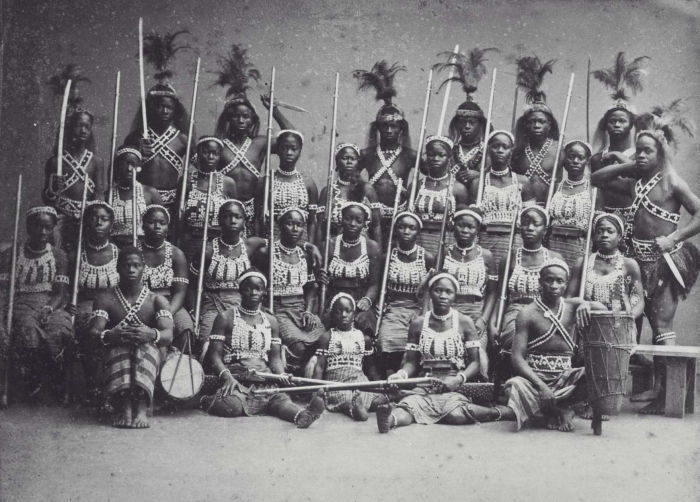
To whom do we owe the creation of the Dahomey Amazon Regiment?
Some sources attribute the creation of the regiment of the Amazons to King Aho Houegbadja of Dahomey towards the end of the 17th century. However, history has established that we owe the birth of the regiment as we know it today to Queen Tassi Hangbé, who was almost erased from history. .
Tassi Hangbé, or Nan Hangbé, the only woman to have reigned on the throne of Dahomey, is therefore considered the true creator of the Amazons. The twin sister of Houessou Akaba thus took care to train certain women of the kingdom in combat by laying the foundations of the regiment.
During her relatively short reign of barely four years, the queen would cross-dress to take the lead of the troops to prove the ability of women to fight.
How were recruits chosen?
To form the grouping of the Minon (our mothers in Fongbé), the fine flower of the Dahomean army, recruitment was a crucial step. The selection process for the women who were to join the corps was therefore very strict and followed well-defined standards.
From childhood, young girls, descendants of slaves of the king, were thus chosen to later become Minon. Apart from this enlistment by force, some women in society volunteered to join the army.
Once every three years, subjects of the kingdom were ordered to present their daughters to a council of wise men. This council was responsible in particular for appointing the most suitable young girls to be part of the regiment and therefore to be admitted to the king's residence.
Following a harsh training, women were appointed soldiers or officers according to the social class to which their family of origin belonged. Considered as wives of the king and part of his harem, the Minon had to make vow of virginity and celibacy for the duration of their military service.

How were the Amazon troops organized?
The elite military unit of the Agoodjié had no less than 5,000 female soldiers devoted to the defense of the king, i.e. almost a third of the army's strength. Already at that time, the unit was organized according to corps and categories that have nothing to envy to the modern army.
Female fighters were also classified according to a certain hierarchy including Gahu (officers), Ahouangan (non-commissioned officers) and soldiers. They were also divided into two main bodies, the Aligossi and the Djadokpo.
The Aligossi were in a way the king's close guard. In addition to guaranteeing the personal safety of the king, they were also posted around the palace to prevent any attack.
For their part, the Djadokpo served as scouts for the rest of the troops during battles. These fighters known for their devastating strike force were placed in the front to weaken the enemy from the start of the assault.
The Djadokpo corps was itself subdivided into five categories of soldiers :
- the fusilières or Galamentoh, constitute the largest part of the troops of the Minons. Using their Winchester rifles, they attacked, firing point-blank with disconcerting precision. It should be noted that they carried daggers on them in case of close combat.
- the archers, reinforcements of the Galamentoh, armies of arrows with tips coated with a formidable poison, attack enemies from a distance;
- the Gbeto, also known as huntresses, who are the elite commandos of the unit. With their massive and imposing builds, they were the most adept in hand-to-hand combat and had a reputation for being particularly deadly. This therefore explains their slogan to make opponents pale: " conquer or die " ;
- the reapers armed with two machetes that they wield with a surgical dexterity that allowed them to eliminate enemies with a blow. The heads they cut off in battle served as war trophies that they liked to brandish;
- and the Agbaraya, for their part, are a little further back, but do just as much damage when armed with blunderbusses which allowed them to decimate enemy troops.
During their tough training to join the ranks of the Dahomey Amazons, each woman was assigned to one of the categories mentioned above according to her affinities..
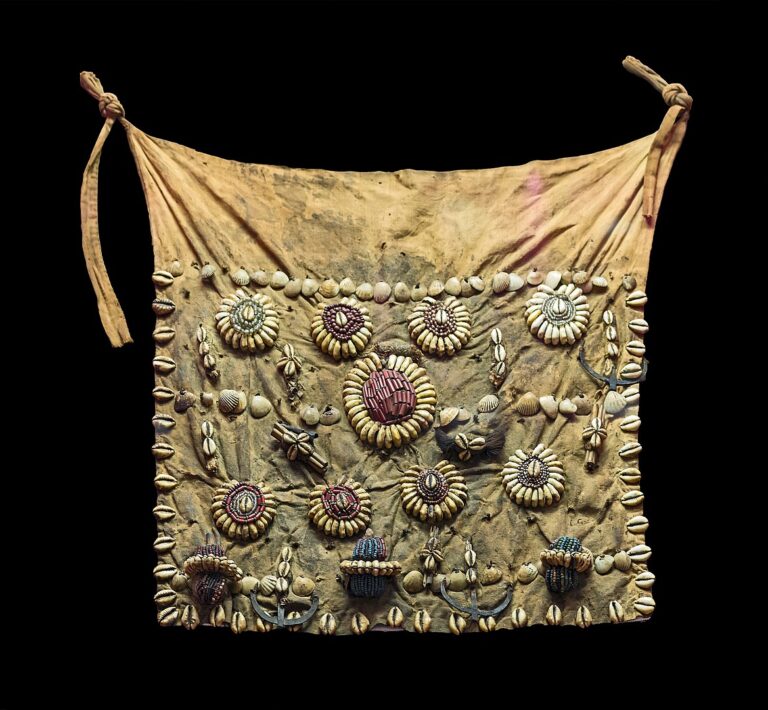
The role of the Dahomey Amazons in the resistance to France?
Some of the written records we have today about the Dahomey Amazons come from those who encountered them on the battlefield: the European settlers. If we are to believe the stories transcribing the feelings of French soldiers, the Minon are among the armies that caused them the most problems during the wars of conquest.
As always extremely devoted to the crown, the Minon knew how to support their king Guézo, then his successor Béhanzin in their decision to resist the colonial invasion. These women, as valiant as they were bloodthirsty, very quickly became a real nightmare that haunted the nights of the most valiant French soldiers.
If General Dodds's troops thought they could put down the Dahomean resistance with an easy campaign, the Minon quickly took that idea from their minds. One of the most significant campaign days will surely remain that of October 26, 1892, which was, according to the general and major player in French colonization, " the deadliest day of this war ».
During these four hours of fierce combat which seemed like a day, the French soldiers were heavily tested by the prowess of the Amazons. They exclaimed:
We are created to defend, Danhomè, this pot of honey, object of covetousness, can the country where so much courage flourishes abandon its wealth to foreigners? we alive, crazy the people, who would try to impose their law on it
At the end of this disastrous day when the warriors fought body and soul, they ended up decimated, having preferred death to cowardly abandonment and died with dignity.
Who is the last known Dahomey Amazon: Nawi?
Considered to be the last amazon of the Dahomey warrior corps, a centenarian woman named Nawi has been the subject of a report. A Beninese historian met her in 1978 in the village of Kinta where she confided to the researcher her memories of the battle of 1892 in which she said she took part.
A year after revealing her secrets to the world, in 1979, Nawi gave up her ghost, leaving behind her a most impressive life. His legacy left to posterity has not been lost and his name has also been given to a few fictional characters related to the Minon.
The representations of the Dahomey amazons in the cinema
The story of the campaigns and the way of life of the Amazons of Dahomey continues to fascinate more than one, several centuries later. There are therefore many mentions made of this extraordinary army in works of fiction, especially cinematographic.
Among the greatest masterpieces that are openly inspired by the impressive experience of the Dahomey Amazons, two particularly attract attention: Black Panther and The Woman King.
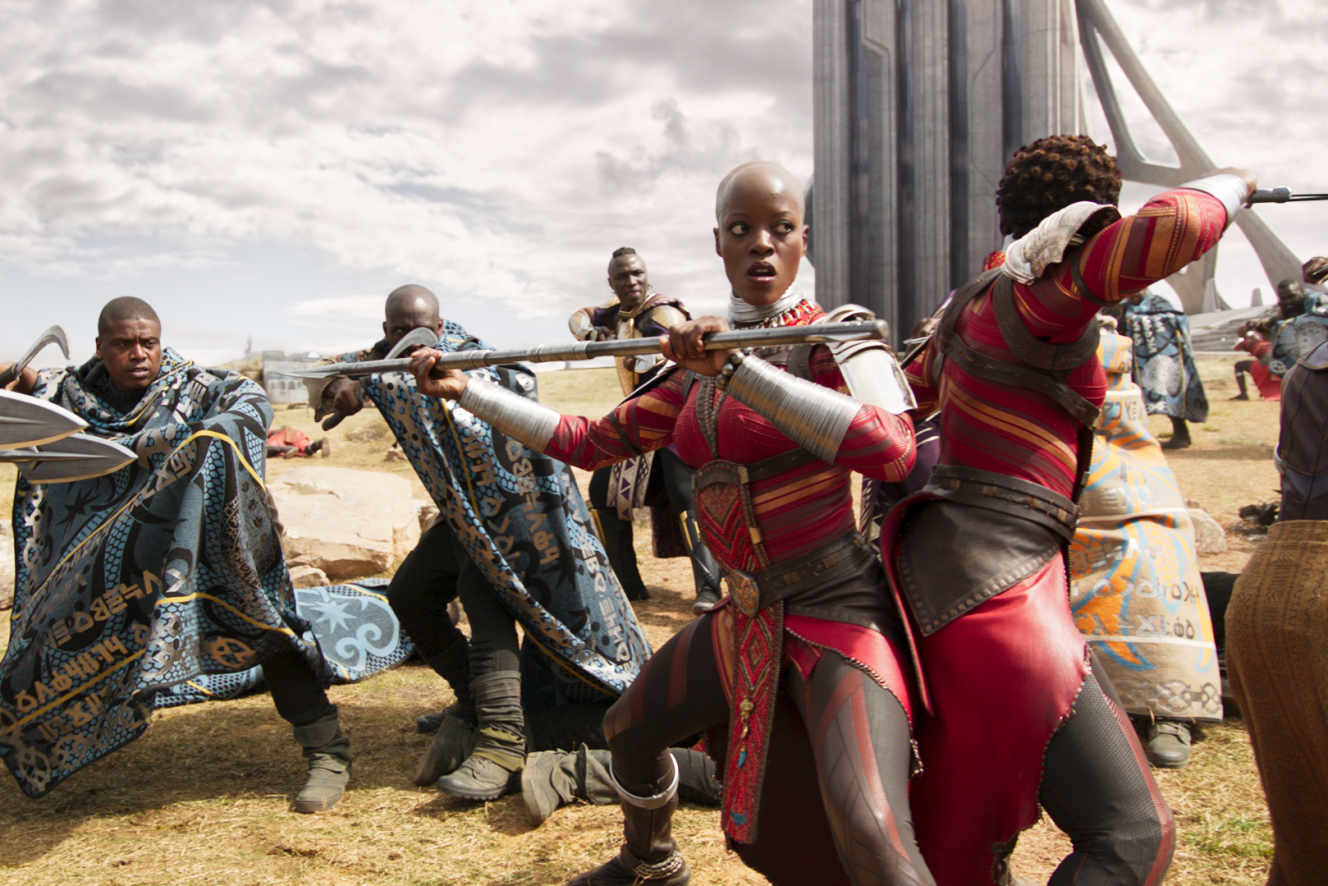
Black Panther is inspired by the amazons of Dahomey
Unless you live cut off from civilization, it's impossible you haven't heard of the Marvel movie, Black Panther. As well as being a smash hit at the global box office, the film portrays a tech-savvy African nation that is several years ahead of the rest of the world.
And in the middle of this idealized picture of Africa, a beautiful nod is made to the army of the Minons through the military corps of the Dora Milaje which protects Wakanda.
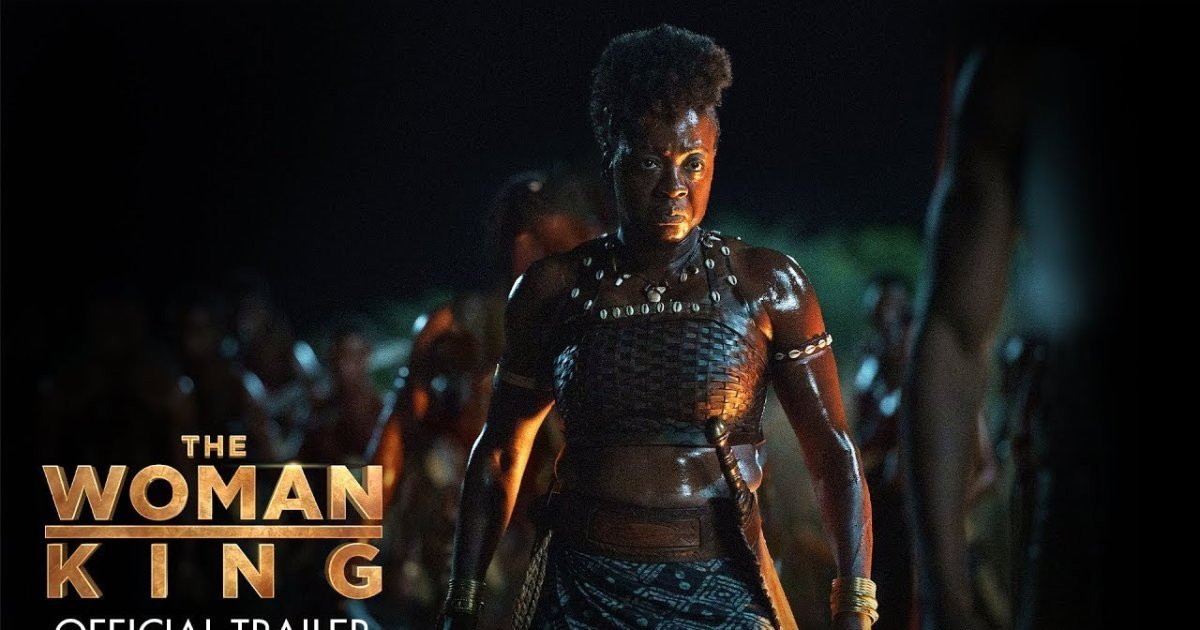
The Woman King with Viola Davis: historical film about the Dahomey Amazons
To trace the atypical journey of the Amazons, American cinema personalities such as Cathy Schulman, Viola Davis, Julius Tennon and Maria Bello unveil the film The Woman King. This is a historic production that pays tribute to all the Minons. The Movie premiered in theaters on September 16, 2022 and was an instant hit.
Starring Viola Davis, it follows the story of Nawi, an amazon from Dahomey and her mother, Nanisca. Miss Universe 2019, Zozibini Tunzi and Beninese singer Angélique Kidjo are also part of the cast which promises a very rich production.
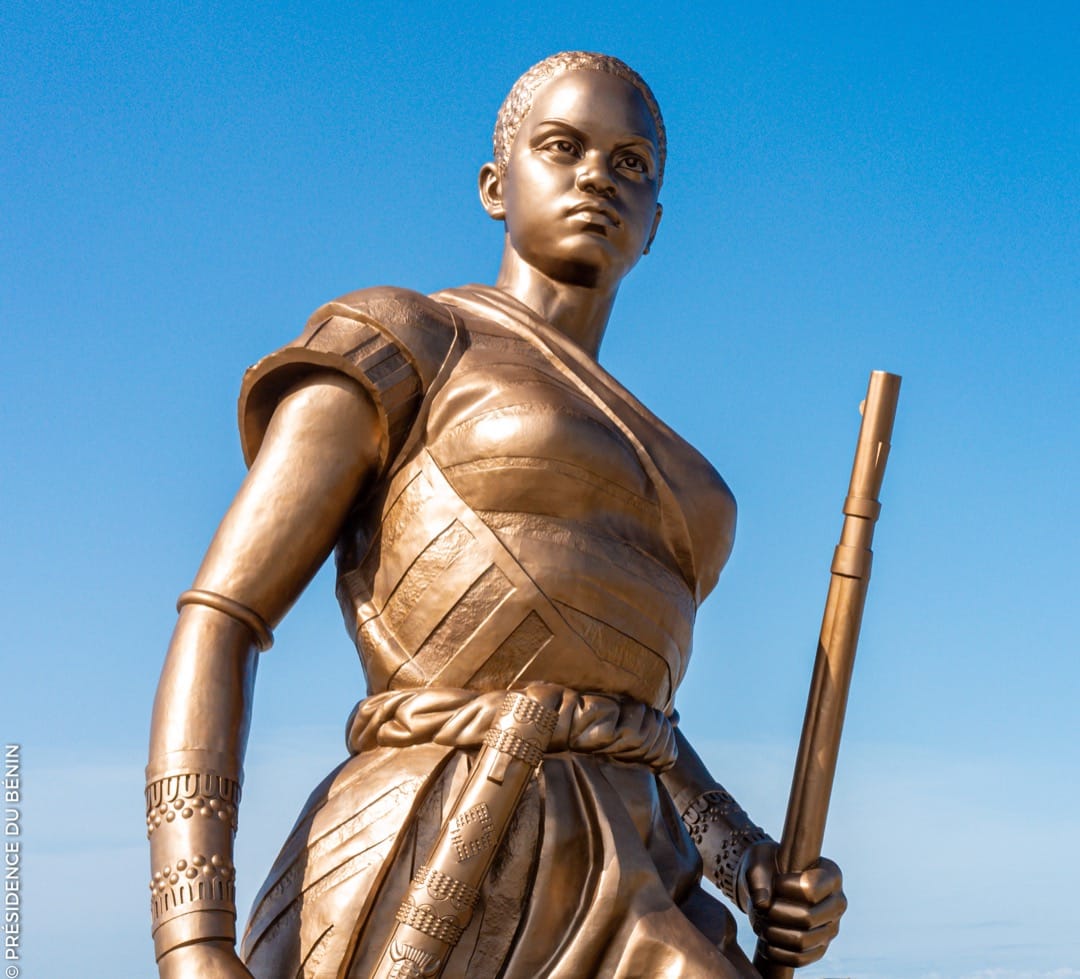
5 things to know about the Benin Amazon statue
In order to pay homage to the bravery shown by the Minon, the Beninese State recently revealed a special monument to the public: the statue of the Amazon of Benin. The building erected a few steps from the presidential palace of the Marina has not yet been officially inaugurated and contains a few surprises.
Here are five things to know about the statue of the Amazon of Benin .
The statue is not a representation of Tassi Hangbe
When the statue was first presented, speculation was rife as to the character it depicts. A fake that the statue was a reproduction of Queen Tassi Hangbe has therefore been widely shared on the web.
Noting the situation, the government wasted no time in clarifying the situation and specifying that it is not a tribute to the Queen of Dahomey. Through his Twitter account, the government explained that there was no particular model for the bronze statue. She is an artistic depiction of a classic member of the historic Women's Army Corps.
The Amazon of Benin statue is the second largest in French-speaking Africa
From the top of these 30 m in height (excluding the base), the statue of the Amazon of Benin passes just behind the Monument of the African Renaissance in Dakar which rises to 52 m above ground. It thus becomes the second tallest statue in French-speaking Africa. The metal structure has a weight of 150 tons with a bronze coating.
The statue of the Amazon of Benin was designed by a Chinese artist
Contrary to all expectations, the Beninese government did not decide to entrust the design of this monument steeped in history to a local artist, but rather to a Chinese artist. It was Li Xiangqun who received the mission on July 17, 2019 to bring the statue of the Amazon to life.
It has a dedicated place: the Esplanade des Amazones du Bénin
For a more lasting representation of the heritage of the Amazons, the statue of the Amazon of Benin also has a place dedicated to her. All the space around the statue located behind the presidential palace will therefore be converted into a square that bears the name Esplanade des Amazones of Benin.
It is a few meters from the longest mural in the world
Since the reforms in the tourism sector in Benin, many efforts have been made to make the landscape more and more attractive to the public. The government therefore contributed to the launch of the Effet Graff’ project a few years ago. It consisted of the development of a mural of graffiti.
The work of more than twenty artists has therefore led to the achievement of an almost crazy bet, the longest mural in the world. To complete this colorful picture, our dear statue of the Amazon of Benin is located just a few meters from this fresco.
The monument was inaugurated on August 30, 2022, the eve of the country’s independence day, by the President of the Republic Patrice TALON.
So, aren't the Dahomey Amazons fascinating? And if you also come to visit the Esplanade des Amazones to immerse yourself in the majesty of the place and the immensity of those it magnifies?
Answers to your questions about the Dahomey amazons
What is the name of the queen of these warriors?< span class="ez-toc-section-end">
History credits Queen Tassi Hangbé with restructuring the Agoodjié corps. She also led the army of the Agoodjié, the Amazons of Dahomè, during certain campaigns of conquest, notably that against the Ouémènou.
Where did the female soldiers of Dahomey live?
The Amazons of Dahomey were recruited as teenagers and cut off from the rest of the world. They were isolated in the royal palaces where they dedicated their lives to training and the handling of weapons. When they were not in the royal palaces, they were assigned to the protection of the king or led wars of conquest.
Who was the first king of Dahomey?
Historians believe that King Aho Houegbadja, third king of Abomey, is the founder of the kingdom of Danhomè because he built the royal palaces of Abomey and expanded the kingdom through his conquests. The first king of Abomey however was Gangnihessou who reigned from 1600 to 1620.
What are the female soldiers of Behanzin called?
The elite corps of Béhanzin's army, composed exclusively of women, was called Mino by the soldiers of the other Dahomey infantry. Which means “Our Mothers” in Fon, the main local language. These intrepid warriors were also called Agoodjié which meant "get out of my way! ". In contact with European merchants and then colonizers, these women were called Amazons by the invaders in reference to the mythical Amazons of ancient Anatolia.
Who defeated the Amazons of Dahomey?
It was probably in the fight against the troops of the colonizer that most of this elite corps was decimated. The French forces inflicted immeasurable losses on the Mino. During the battles, the French legionnaires, reinforced by the foreign legion, were able to defeat the Amazons who had specialized in close combat. Their adversaries, on the other hand, had particularly sophisticated short and medium range weapons.
What is Dahomey called today?
The Kingdom of Dahomey was located south of the current Republic of Benin (previously Republic of Dahomey from 1958 to 1974). West African country bordered to the east by Nigeria, to the south by the Atlantic Ocean, to the west by Togo and to the north by Niger and Burkina-Faso.
What is the meaning of Dahomey?
The name Danxomè (Anglicized Dahomey) is attributed to Akaba, fourth king of Abomey. Which means, in fon, in the belly of the serpent (Dan). This king would have killed a Gedevi king named Dan who refused to grant him additional land. He would then have built his royal palace on the body of the deceased, claiming to build on the belly of Dan.
What is the date of death of Tassi Hangbé and his place of burial?
Queen Tassi Hangbé, daughter of King Aho Houegbadja and twin daughter of King Akaba died in 1715, four years after being dethroned. The story does not mention the sequence of events after the abdication to the throne of Tassi Hangbé and the assassination of his only son. However, we suspect that she was buried in her palace with the honors due to her rank of royal princess as tradition dictates.











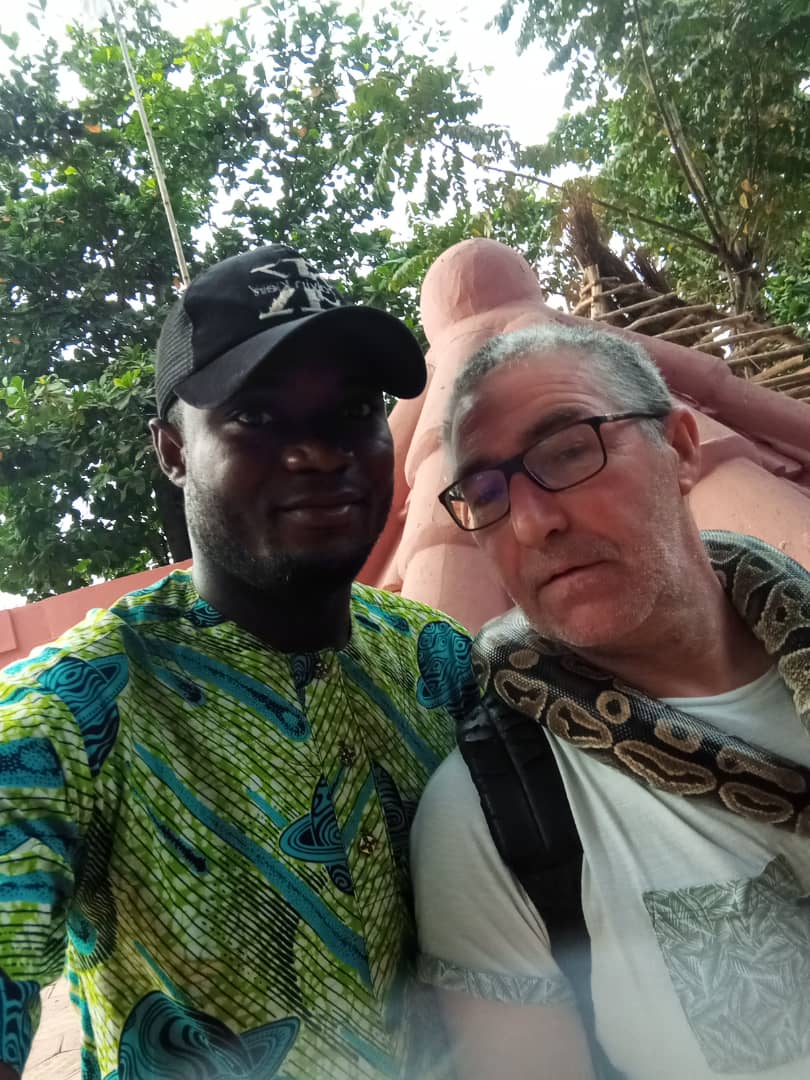

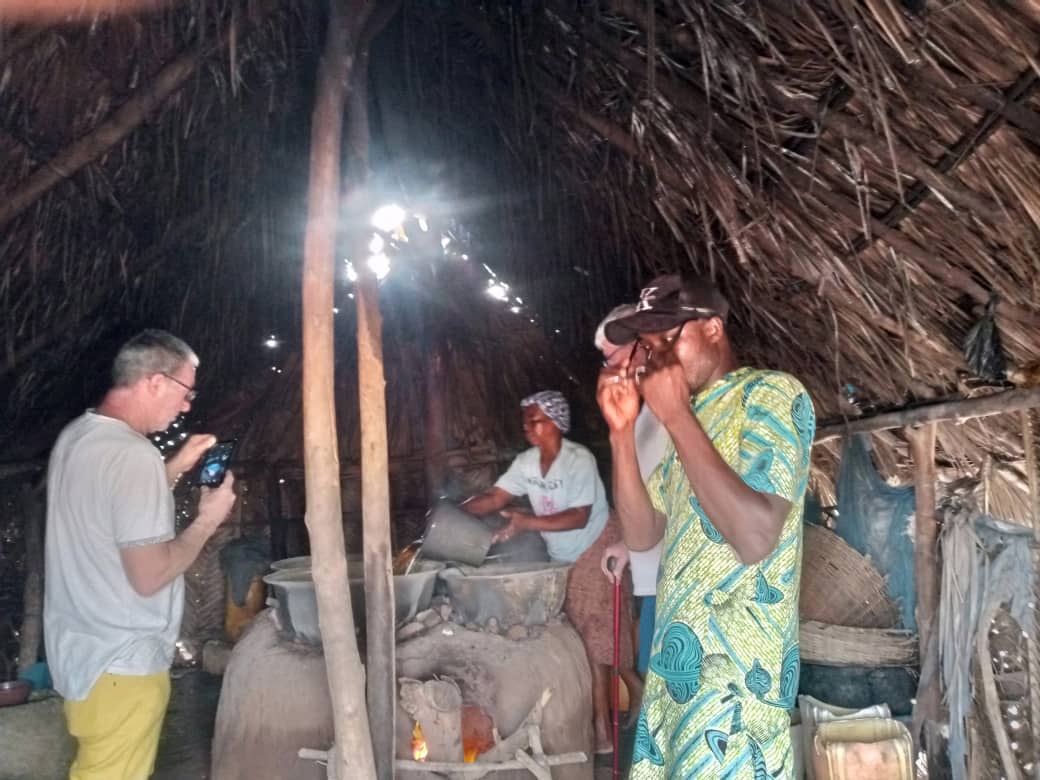
20 Avis
• A discovery of Benin from every angle
• Authentic encounters with the population
• Memorable canoe crossings
• A circuit combining solidarity and discovery of Benin
• Participation in local development actions
• Authentic encounters with the population
Add a comment
Your email address will not be published. Mandatory fields are marked with *